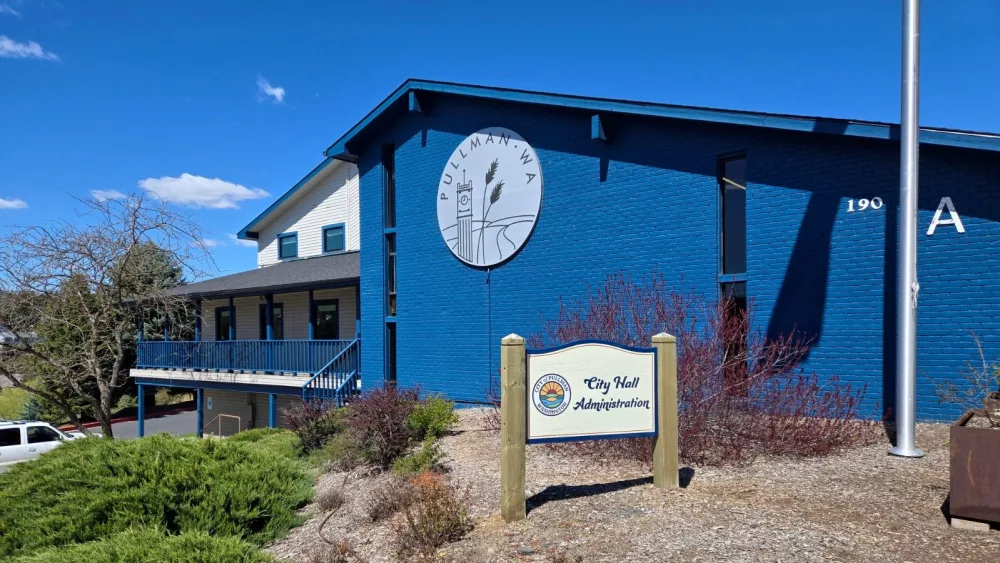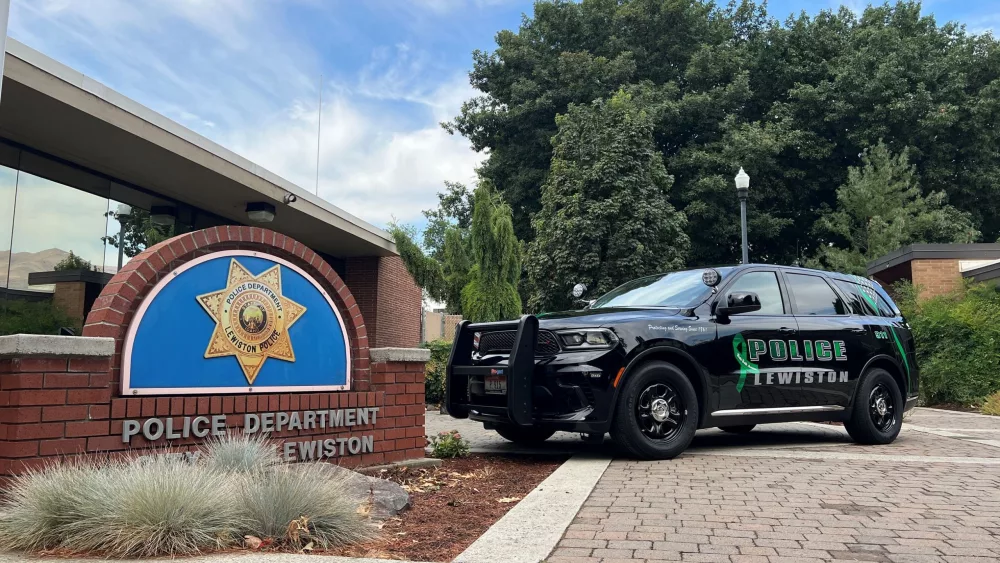James Robbins has spent the balance of his life in addiction. He began abusing substances when he was ten years old. Over 48 years of active opioid use, he was mentally abusive to his wife. They lost custody of their children. They lost their home.
But Frank Morrison found James in an alley in downtown Longview one day, and James started climbing towards recovery. Morrison runs CORE Health in Longview, a shelter with supportive services to resolve addiction. Robbins stayed for ten months, entered treatment, and got better. He treated his wife better. He got a job — Frank hired him to do construction and maintenance.
“When people get treatment, they get better,” says Robbins, who has been managing his addiction successfully for five years.

In a sense, Robbins is lucky. Opioids are extremely dangerous — one pill can kill, in the case of illicit fentanyl. Opioid addiction is widespread and deadly. First responders were called to suspected opioid-related overdoses more than 2,000 times a month statewide in 2023. The rate of opioid deaths has more than doubled since 2019. Tribal communities have been acutely afflicted — their death rate is quadruple the state average. CORE Health drug treatment clients reported beginning to use substances at age 13 on average.
But people can get better. According to national studies, three-quarters of patients who complete long-term drug treatment achieved durable abstinence. And lives can be spared if the message that fentanyl kills is delivered.

On Monday, Gov. Jay Inslee hosted a roundtable with experts at Evergreen Recovery Center in Everett to discuss the crisis and to preview his proposals for the upcoming legislative session. The governor’s budget adds over $50 million in new funding to take down opioids for the 2023–25 biennium.
“We’re putting treatment closer to people and we’re going to save lives. We’re reaching the people most vulnerable to this fentanyl scourge. And we’re getting drugs off the street,” Inslee said.
The new funding would augment investments from the state’s $82 million opioid settlements with drug manufacturers and pharmacies responsible in part for the opioid crisis, and general fund investments within the 2023–25 biennial budget. The biennial budget allocated over $200 million for substance use disorder (SUD) treatment facility operations, rental subsidies for people with SUD, treatment subsidies, criminal diversion programs, peer support services, Tribal SUD grants, and more.

Education and awareness
Drug use can start young. Among adolescents ages 12 to 17, 6.3% already show substance use disorder in 2020, according to the Substance Abuse and Mental Health Services Administration (SAMHSA). And studies show that earlier exposure to drugs leads to greater risk of dependence. Opioids, specifically fentanyl, are cheap and abundant, not to mention extremely potent and addictive. One pill is enough to end a person’s life.
Education is essential to help youth resist drugs, and to help classmates survive dangerous exposures.

The state Department of Health (DOH) and Health Care Authority (HCA) have launched several awareness campaigns to help. The “Friends for Life” campaign is destigmatizing the overdose prevention drug naloxone. The “It Starts with One” campaign warns of the danger of addictive opioids. Inslee’s supplemental budget proposal bolsters these kinds of outreach programs to reinforce that fentanyl is a killer.
Another of the governor’s priorities is school-based support. The budget will help Education Service Districts (ESDs) hire staff to teach families about opioids and provide service referrals as needed. Additionally, the Office of the Superintendent of Public Instruction will work with ESDs to update opioid prevention curriculum in grades 8–12.
To support efforts among Tribal communities, Inslee’s proposal will fund deployment of the Icelandic Prevention Model and the Rise Above program, which treat substance use as a social problem rather than an individual problem. Programs inspired by this philosophy strengthen interpersonal relationships and focus on other proactive health factors that help youth to resist drugs. Rise Above is a Native-led nonprofit that helps at-risk youth ages 5–18 in urban areas avoid the juvenile justice system through culturally-relevant social activities.
The budget also supports Tribal initiatives proposed during the recent Centennial Accords, including the “For Native Lives” public health campaign.


Community health hubs
Community health hubs centralize health services to single, accessible locations. A hub can offer a person who uses drugs access to necessary medication, counseling, and other supports.
These hubs are designed as all-in-one locations for low-barrier and culturally-responsive services. In addition to SUD treatment, these hubs offer primary care, wound care, reproductive health care, overdose education, and social services.
HCA will launch two hubs in 2024 that were funded in the 2023 legislative session. Seeing the promise of these programs, the Governor’s budget will establish two more hubs by 2026, and two more in 2027. These new hubs will serve as all-in-one locations where people can access medical treatment and social services.
Harm reduction

You can only recover from substance use disorder if you’re alive. That’s the logic driving harm reduction services, which help people avoid some of the common and devastating consequences of drug use.
Naloxone, for example, is a lifesaving medication that reverses overdoses. Much like an automatic defibrillator, naloxone is easy to deploy and provides clear instructions to save a life. But much like defibrillators, people are frightened to use them. HCA and independent partners like the Washington Poison Center have led campaigns to destigmatize naloxone, and the drug is now broadly available over-the-counter for as little as $25 per dose.
The governor’s budget funds naloxone distribution to first responders and would also stand up 15 “Smart Health Machines” statewide to be stocked with naloxone and other health supplies. The machines will be deployed in communities with disproportionate opioid overdoses.
Treatment access
Treatment works, but access to treatment is troublesome. When people don’t speak English, don’t have a car, or suffer from chronic mental illness, treatment is even more difficult to access. Treatment is more effective when it reaches people where they are, when they are ready. The governor’s budget will support methods to bring treatment closer to people who need it.
Opioid Treatment Programs (OTPs) are the only outpatient settings where certain common medications for opioid use disorder (MOUDs) may be administered legally. Expanded funding in OTPs will help them reach Tribal areas and underserved rural communities.
There is also a great need for MOUDs inside jails and state correctional facilities. Currently, MOUD treatment in correctional facilities is limited to persons already engaged in MOUD treatment before they were imprisoned. In jails, Medicaid funds may be used to cover MOUD treatment for covered individuals in jail, but not for another two years. The governor’s budget proposes funds to bridge that two-year gap and begin MOUD administration right away.
Recovery services

Recovery takes help. And help means people.
Last session, legislators approved a 15% rate increase for many behavioral health providers that will take effect in January. UW will soon open a first-of-its-kind teaching hospital. But more is needed to bolster the workforce. Two federal Opioid Workforce Development Grants will help bring new talent to the field in Clark, Cowlitz, and Spokane counties.
Expanding proven programs is another focus of Inslee’s proposed budget. Oxford Houses in Washington State are self-supported, and they help people get clean and stay sober. The governor’s budget proposes funding to open six more homes with as many as 50 additional beds. One 18-year study of Oxford Houses found that the facilities were generally effective in promoting recovery, and that residents reported living in a setting devoid of relapse triggers helped them remain substance-free. There are 338 Oxford Houses in Washington state operating 2,936 beds in total.
And recovery is a little easier when drugs are less accessible. Police departments will receive state funding to disrupt drug rings infesting Washington communities. In March, local law enforcement partnered with federal authorities to indict 27 members of a drug distribution conspiracy in Pierce County. In July, King County authorities arrested six in a sting that seized over 480,000 fentanyl pills, including “rainbow fentanyl” to appeal to youth. Considering that even one fentanyl pill can be deadly, stings that remove large volumes of drugs from circulation are certain to save lives.
The governor’s 2024–25 supplemental budget contributes significant new resources that will save lives and add supports across the spectrum of the continuum of care for opioid use disorder.




